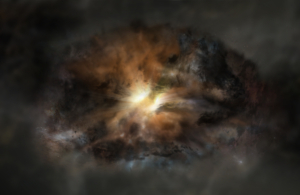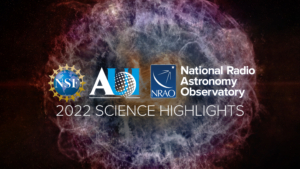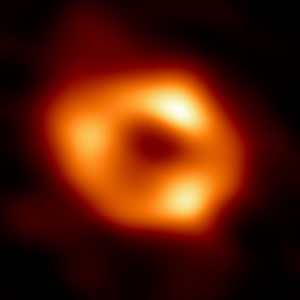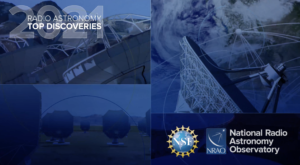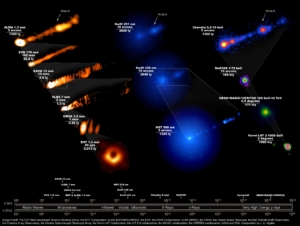While studying galaxies in the early Universe with the Atacama Large Millimeter/submillimeter Array (ALMA), scientists discovered one of the most extreme galaxies ever recorded in the early Universe. What’s more, it was hiding a unique supermassive black hole (SMBH). The observations could unlock clues about the early formation of these violent giants and how to find them.
Science Highlights 2022: Black Holes, Pulsars and Turbulence
The Universe is a dynamic and exciting place, with stars, planets, and galaxies being born, dying, and undergoing dramatic changes. In 2022, the telescopes of the National Science Foundation’s National Radio Astronomy Observatory (NRAO) revealed fascinating new details about several of these processes, and we’re giving you a taste of the greatest radio astronomy moments of the year.
Astronomers Reveal First Image of the Black Hole at the Heart of Our Galaxy
Astronomers have unveiled the first image of the supermassive black hole at the center of our own Milky Way galaxy. This result provides overwhelming evidence that the object is indeed a black hole and yields valuable clues about the workings of such giants, which are thought to reside at the center of most galaxies. The image was produced by a global research team called the Event Horizon Telescope (EHT) Collaboration, using observations from a worldwide network of radio telescopes.
2021 Science Highlights: Looking Back on a Turbulent Year in Radio Astronomy
The formation of massive stars and planets. The deaths of stars and galaxies. The extreme and violent behaviors of black hole jets and quasars. An up-close and personal radar view of the Moon. These mysteries and more were unraveled in 2021 by radio astronomers leveraging the scientific and technological power of National Radio Astronomy Observatory (NRAO) facilities.
VIDEO: Multi-wavelength Observations Reveal Impact of Black Hole on M87 Galaxy
New multi-wavelength observations mounted by the Event Horizon Telescope (EHT) collaboration across the entire electromagnetic spectrum have provided new insight into the impact of the black hole at the core of galaxy M87 on its immediate, and not so immediate, surroundings.
Quasar Discovery Sets New Distance Record
Astronomers using the Atacama Large Millimeter/submillimeter Array (ALMA), along with other telescopes, have discovered the most distant quasar yet found. The bright quasar, powered by a supermassive black hole at the core of a galaxy, is seen as it was only 670 million years after the Big Bang, and is providing valuable clues about how such huge black holes and their host galaxies formed in the early Universe.


